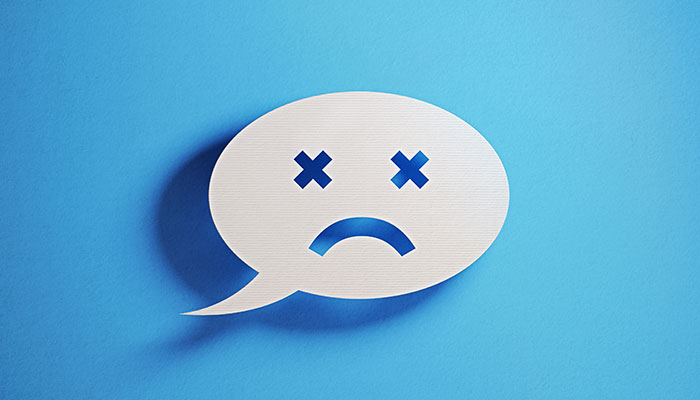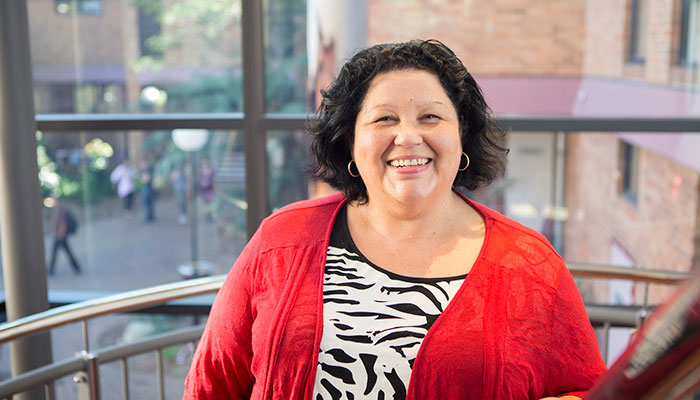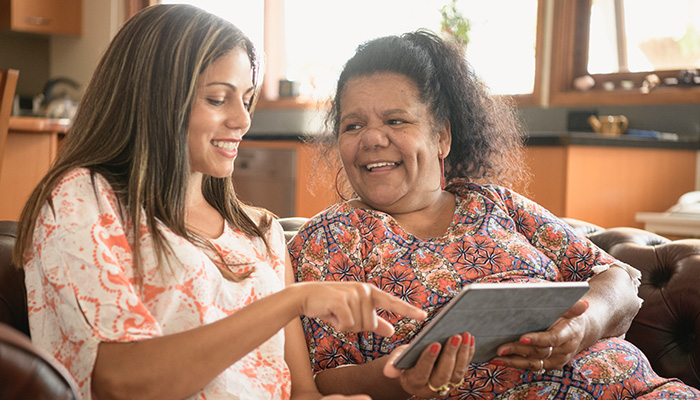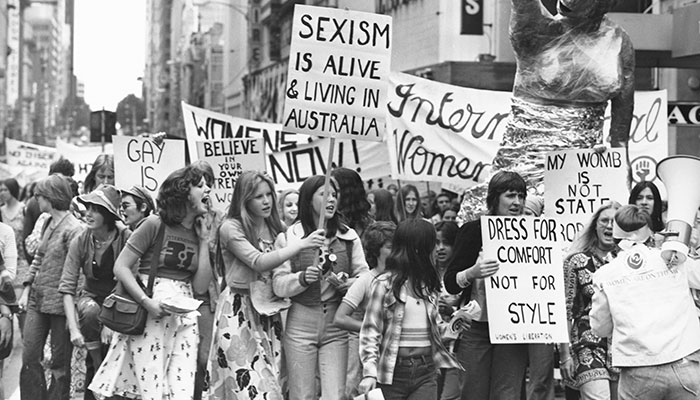Social media has been both beneficial and challenging for communities worldwide, and Australia’s Indigenous communities are no exception – although research also shows that the impacts of Internet technologies are often different for Indigenous peoples and communities for a range of social, cultural and political reasons.

Clear and present danger: the new report shows social media is facilitating racist abuse against Indigenous peoples, and widespread cyberbullying.
Even in the most remote communities in Australia, social media is extremely popular, and is often used in culturally specific ways, reinforcing family intimacy and kinship ties.
“Our research shows that social media has brought plenty of benefits for Indigenous people, helping families and communities connect intimately across vast distances, allowing users to share and maintain cultural knowledge, fulfil cultural protocol, such as Sorry Business, and engage in political activism,” says Professor Bronwyn Carlson, who is Head of Macquarie’s Department of Indigenous Studies.
“However, it has also facilitated racist abuse against Indigenous peoples and the perpetration of widespread cyberbullying. Research has been slow in keeping up with recent shifts in online practices and it’s important that we watch this space closely.”
Cyberbullying for Indigenous people doesn’t occur at the same rate, or for the same reasons, nor does it have the same impacts as it does for non-Indigenous people.
Cyberbullying has four main components – it’s intentional, repeated, occurs between people unequal in power and occurs through electronic media. It can include ‘flaming,’ denigration, exclusion, cyber-stalking, harassment through repeated abusive messages, ‘outing’ and revenge porn, and happens on forums and chat rooms, via smartphones and through social media.
Online bullying is a rising scourge that’s particularly damaging to young people, with research showing that up to 40 per cent of young social media users in Australia experience cyberbullying.
For Indigenous people, the impact is even worse: a report by Carlson and Research Fellow Ryan Frazer shows that social media is facilitating racist abuse against Indigenous peoples, and widespread cyberbullying.
Their report, Cyberbullying and Indigenous Australians, was prepared for the Aboriginal Health and Medical Research Council of NSW and explores national and international findings on cyberbullying, particularly among school students, and how these actions can impact Indigenous individuals and communities.
The report concluded that cyberbullying has serious social and psychological consequences for both victims and perpetrators. It also highlighted the lack of research into cyberbullying among and directed at Indigenous people, and the effects of a context where systemic racism, intergenerational trauma, the ongoing legacy of colonialism and economic disadvantage are widespread.
“Cyberbullying for Indigenous people doesn’t occur at the same rate, or for the same reasons, nor does it have the same impacts as it does for non-Indigenous people,” says Professor Carlson.

Driving change: Professor Bronwyn Carlson is behind a campaign to produce a series of posters informing indigenous communities about cyberbullying and other social media issues.
Last year, the pair completed a national research project into Indigenous social media use resulting in a report entitled Social Mob: Being Indigenous Online. They conducted interviews with 60 people who came from 10 different Indigenous communities across Australia and also surveyed more than 70 Indigenous people via social media who were from all over the country, and found that over a third had personally been subjected to racism online.
Racist trolling and abuse directed at young Indigenous social media users can be prolific, harmful and even deadly, because it can have dangerous mental health impacts including triggering suicide, Carlson says.
Indigenous suicides are a serious and rising crisis in Australia. In the first three months of 2019, 35 Aboriginal and Torres Strait Islander people took their own lives, including 14 children aged under 18 – with two of the girls only 12 years old.
Cybersafety forums and culturally useful posters
In response to the research, Carlson and Frazer are working on a partnership between Macquarie’s Department of Indigenous Studies and the Aboriginal Health and Medical Research Council. They also hosted an open forum about social media use for Indigenous leaders, with representatives from ReachOut Australia, the Office of the e-Safety Commissioner and the Mental Health Commission attending.
“A lot of Aboriginal organisations and individuals came, and over a full day we held many conversations about cyberbullying and Indigenous communities,” says Carlson.
“People came seeking help for things like suicide, mental health, combating racism and cyberbullying online, and as the literature review points out, there is a paucity of research focus on the topic here in Australia.”
- Sharenting alert: the risks of sharing pics of your kids online
- Video games could make us better people
Following the forum, the group engaged Indigenous creative agency Iscariot Media, to produce a series of five posters to better inform Indigenous communities about cyberbullying and other social media issues.
Professor Carlson says these were made with Indigenous communities in mind, and while they were playful and engaging, they had some serious messages.
“There are cyberbullying nuances that can be specific to Indigenous communities – for example, defacing certain images and other forms of disrespect can have quite profound impacts that need to be recognised,” she says.
The posters are aimed at different audiences, some targeting parents, others youth and the LBGTQI community. They explain what cyberbullying is, how it can generate and exacerbate trauma and the link to suicide ideation and ‘lateral violence’ within communities.
“The aim of the posters is to share them widely through Aboriginal and Torres Strait Islander health, education and community organisations to inform people, give more information and include some practical places to go and seek help,” Carlson says.
Scholarships are available for Higher Degree Research candidates interested in exploring Indigenous peoples’ experience of cyberbullying. Indigenous candidates are also eligible to apply for Macquarie University’s Indigenous top-up scholarship.



